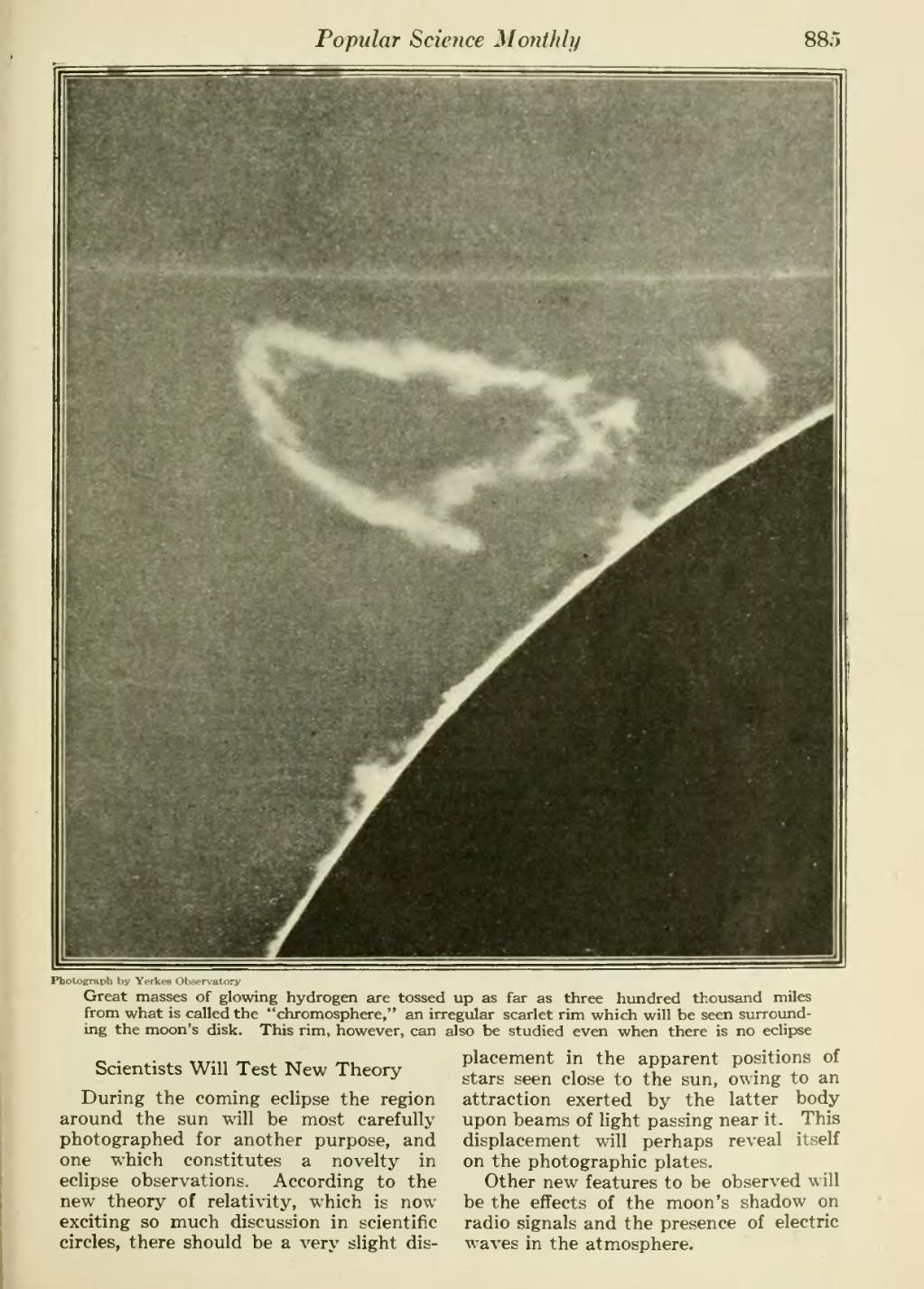Popular Science Motithh/
��885
���Photoeraph by Yerkcs Observatory
Great masses of glowing hydrogen are tossed up as far as three hundred thousand miles from what is called the "chromosphere," an irregular scarlet rim which will be seen surround- ing the moon's disk. This rim, however, can also be studied even when there is no eclipse
��Scientists Will Test New Theory
During the coming eclipse the region around the sun will be most carefully photographed for another purpose, and one which constitutes a novelty in eclipse observations. According to the new theory of relati\ity, which is now exciting so much discussion in scientific circles, there should be a very slight dis-
��placement in the apparent positions of stars seen close to the sun, owing to an attraction exerted by the latter body upon beams of light passing near it. This displacement wall perhaps reveal itself on the photographic plates.
Other new features to be observed will be the effects of the moon's shadow on radio signals and the presence of electric waves in the atmosphere.
�� �
